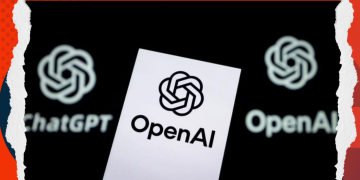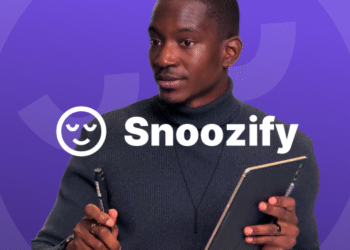GSMA just partnered with the UAE’s Khalifa University to develop next-generation AI models built specifically for telecom networks. The partnership aims to fix what current AI models get wrong when dealing with complex network issues.
The announcement came during MWC Doha 2025, where GSMA Foundry and Khalifa University revealed their plan to develop TelecomGPT 2.0. This new AI model addresses problems that even advanced systems like GPT-4 and Llama-3 can’t solve when dealing with telecom networks.
TelecomGPT Already Outperforms Leading AI Models
Current testing shows something surprising. Even the most advanced AI models struggle with basic telecom tasks. GSMA’s benchmarks reveal that popular AI systems fail at interpreting industry standards, troubleshooting network problems, and understanding technical telecom language.
The first version of TelecomGPT, released in mid-2024, already beats GPT-4, Llama-3, and Mistral on telecom-specific tasks. The model excels at mathematical modelling tasks that general AI systems find difficult.
Professor Merouane Debbah from Khalifa University’s 6G Research Centre explains the gap: “Large Language Models have become instrumental in the pursuit of autonomous, resilient and adaptive networks. However, current models lack the specialized knowledge needed for real-world telecom applications.”
Partnership Creates Open Telecom AI Resources
The collaboration will release several key resources for the telecom industry. The TelecomGPT chat interface will be hosted on LightOn, making it accessible to operators worldwide. An Open Telco Knowledge Graph focused on 3GPP documentation will also become available through Hugging Face.
These tools address a critical need in the industry. Mobile operators require AI that understands complex network protocols, industry standards, and technical specifications. General-purpose AI models often misinterpret these specialized requirements.
Alex Sinclair, GSMA’s Chief Technology Officer, highlights the practical benefits: “The mobile ecosystem stands to benefit from AI capabilities specifically designed for telecommunications, addressing critical areas such as managing network faults and supporting operational decision-making.”
GSMA Benchmarks Reveal AI Performance Gaps
The GSMA Open-Telco LLM Benchmarks launched at MWC Barcelona 2025 exposed significant weaknesses in current AI systems. The benchmarks test how well AI models handle telecom-specific challenges across multiple categories.
Results show that even frontier AI models struggle with:
- Interpreting complex industry standards
- Network troubleshooting procedures
- Technical telecommunications knowledge
- Real-time fault analysis
The benchmark community now includes 15 major mobile operators like AT&T, China Telecom Global, Deutsche Telekom, Orange, and Telefonica. These companies actively test and validate AI models for telecom applications.
Khalifa University Brings Advanced Research Infrastructure
Khalifa University’s 6G Research Centre provides the technical foundation for this partnership. The research center has established infrastructure for developing energy-efficient AI solutions specifically for telecom networks.
Professor Bayan Sharif, Khalifa University’s Provost, emphasizes their research capabilities: “Our 6G Research Center has a successful track record in contributing to local and international telecom projects, and it is fully equipped with its infrastructure and expertise to help develop AI solutions.”
The university previously developed TelecomGPT through collaboration with Abu Dhabi’s Technology Innovation Institute. This earlier work established foundational evaluation frameworks for assessing AI capabilities in telecommunications.
AI Troubleshooting Challenge Launches Industry Competition
Alongside the partnership announcement, GSMA launched the AI Telco Troubleshooting Challenge. This competition calls on telecom operators, AI researchers, and startups to submit advanced AI models for network fault analysis.
The challenge focuses on root cause analysis and network fault diagnosis – areas where current AI models show significant weaknesses. Winners will help establish new standards for AI-powered network operations.
Louis Powell, GSMA’s Director of AI Technologies, explains the community approach: “By collaborating with the team at Khalifa University, we have created a collaborative ecosystem that is already accelerating innovation to ensure that AI solutions are fit for purpose in real-world networks.”
Next Phase Includes Holistic Performance Metrics
The partnership plans to expand beyond basic performance testing. Future benchmarks will evaluate energy efficiency, response latency, and real-world deployment readiness.
Time to First Token latency becomes crucial as networks move toward autonomous operations. Energy efficiency measurements help operators balance AI capabilities with operational costs.
The collaboration also plans to assess AI agents alongside traditional models. This approach recognizes that future telecom networks will need AI systems capable of independent decision-making.
Industry Implications for Network Automation
This partnership addresses a fundamental challenge facing the telecom industry. As networks become more complex with 5G and future 6G deployments, operators need AI systems that truly understand their technical environment.
Current general-purpose AI models create operational risks when deployed in critical network infrastructure. Mistakes in network troubleshooting or configuration can cause service outages affecting millions of users.
TelecomGPT provides a safer alternative by training specifically on telecom datasets and industry standards. This focused approach reduces errors and improves reliability for mission-critical applications.











